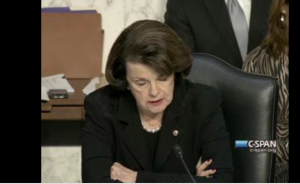The UndieBomber’s Interrogators Asked Him about Anwar al-Awlaki’s Death Just after He Was Put on Kill List
At least by October 4, 2011, UndieBomber Umar Farouk Abdulmutallab had been told that Anwar al-Awlaki had been killed. During jury selection that day, he yelled out “Anwar is alive,” as he had previously yelled out “Osama’s alive” at a hearing in September.
A week later, Abdulmutallab tried to plead guilty, and the following day, on October 12, he somewhat surprisingly did so (though of course he had tried to plead guilty a year earlier when he fired his court appointed lawyers, so maybe it shouldn’t have been such a surprise after all).
I find it interesting that Abdulmutallab knew Awlaki was dead when he plead guilty because Abdulmutallab’s interrogators appear to have tried to goad him into revealing more by discussing the death of Awlaki … before it happened.
In his memo on why Abdulmutallab represents an ongoing danger, Dr. Simon Perry lists the Abdulmutallab interrogations he relied on. The dates track what we know about Abdulmutallab’s interrogation: he confessed on Christmas Day 2009 (apparently implicating an Abu Tarak, which may be an alias for Anwar al-Awlaki). Then he clammed up for several weeks, until the FBI got Abdulmutallab’s family members to fly to MI to convince him to cooperate, which he started doing on January 29, 2010. Perry describes interrogations happening almost every day for 11 days (taking a break on Monday, February 1 and the following weekend, February 6 and 7), followed by seven more interrogations in February. Perry’s list suggests there was a break until April–though he does cite a March 15 interrogation (see footnote 54) that doesn’t appear in his list. In April, there were three interrogations: on April 8, 16, and 30. Altogether, Perry says he referred to reports from 18 or 19 interrogations, depending on whether there was one on March 15.
Perry’s memo therefore provides a really general overview of the interrogations Abdulmutallab had (though we can’t be entirely sure that these include all his interrogations). We can’t really draw conclusions about what the government learned from him when, since Perry’s focus is limited to Abdulmutallab’s radicalization and desire for martyrdom rather than specific information about Awlaki. And, as I noted here, Perry rather bizarrely doesn’t date the interrogation when Abdulmutallab admitted that Awlaki was the person originally named as Abu Tarak who ordered him to attack the US, so we can’t learn from Perry’s memo when Abdulmutallab clearly implicated Awlaki as Awlaki in the plot.
But there are two fascinating details of Abdulmutallab’s interrogation revealed by the following passage of Perry’s memo (remember, Perry uses the acronym UFAM for Abdulmutallab).
Yet we can learn that the rewards of martyrdom play a significant part for UFAM since when he talks about Aulaqi’s martyrdom he stresses that he believes that if Aulaqi were to be killed, he would be entitled to a martyrs reward. UFAM explains (again not in the context of his own martyrdom) that there are different degrees of reward for martyrdom. [interrogation from April 16, 2010] For example UFAM believes that if the accusations against Aulaqi were true (allegations of solicitation of prostitution) Aulaqi could repent for these sins and his commitment to Jihad would outweigh such transgressions. He adds that people are not perfect and that they make mistakes. [interrogations from February 15, 19, 2010]
I’ll start with the second detail first. On February 15 and 19, 2010–Abdulmutallab’s 12th and 14th interrogations of 18 or 19 Perry reviewed, so fairly late in the interrogation process–his interrogators were challenging Awlaki’s sanctity based on his prior busts for soliciting prostitutes. Interrogators presumably told Abdulmutallab about the two times Awlaki had been busted in the 1990s while living in San Diego.
The probe of the 9/11 attacks soon led Washington FBI agents back to San Diego, where they found that al-Awlaki had twice been busted for soliciting prostitutes in 1996 and 1997 but had avoided jail time. Al-Awlaki has previously described these charges as “bogus.” But FBI agents hoped al-Awlaki might cooperate with the 9/11 probe if they could nab him on similar charges in Virginia. FBI sources say agents observed the imam allegedly taking Washington-area prostitutes into Virginia and contemplated using a federal statute usually reserved for nabbing pimps who transport prostitutes across state lines.
And it would make sense that interrogators would raise Awlaki’s past with prostitutes. It appears that Abdulmutallab’s interrogators were trying to get him to reveal more information–lose faith in Al Qaeda so he would reveal more–based on what a hypocrite his religious mentor was.
Not that it appears to have worked. Abdulmutallab just forgave Awlaki in the same way many religious conservatives dismiss their own leaders’ hypocrisy in this country.
The other reference is even more interesting. On April 16, 2010, the second-to-last interrogation of those Perry reviewed, Abdulmutallab’s interrogators asked him about Awlaki’s martyrdom. Or, to use the secular term, they talked about Awlaki’s death. Read more →

